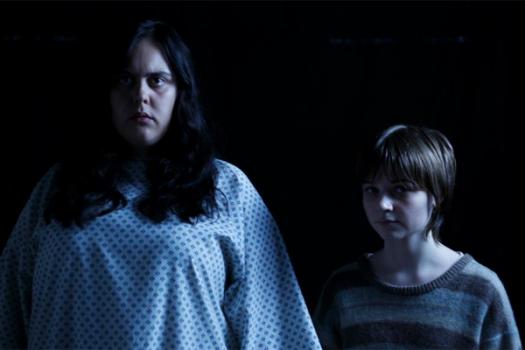The Social Psychology Of The Media (Representations Of Social Groups)

Questions and Answers
- 1.
How many different TV characters does an average U.S. child encounter each week?
- A.
300
- B.
350
- C.
400
- D.
450
Correct Answer
B. 350Explanation
An average U.S. child encounters around 350 different TV characters each week. This suggests that children are exposed to a wide range of characters and storylines through television, which can have a significant impact on their cognitive and social development. The variety of characters may also contribute to the child's understanding of diversity and different perspectives.Rate this question:
-
- 2.
One criticism of gender stereotyping in mass media is _______, whereby women's bodies were visually dissected to show only the lips, eyes or breast.
- A.
Fragmentation
- B.
Underrepresentation
- C.
Minimisation
Correct Answer
A. FragmentationExplanation
Fragmentation is the correct answer because it refers to the act of visually dissecting women's bodies in mass media to focus only on certain body parts, such as lips, eyes, or breasts. This practice contributes to gender stereotyping by reducing women to their physical appearance and objectifying them. It reinforces the idea that women's worth is solely based on their body parts, rather than their intelligence, abilities, or individuality. This type of representation perpetuates harmful gender stereotypes and undermines women's agency and equality.Rate this question:
-
- 3.
Which of the following is NOT a type of masculinity?
- A.
Hegemonic Masculinity
- B.
Conservative Masculinity
- C.
Feminism Masculinity
- D.
Subordinated Masculinity
Correct Answer
C. Feminism MasculinityExplanation
Feminism Masculinity is not a type of masculinity because feminism is a movement that aims to challenge and dismantle traditional gender roles and inequalities. It focuses on promoting gender equality and breaking down the harmful effects of patriarchy. Masculinity, on the other hand, refers to the characteristics, behaviors, and roles traditionally associated with men. Therefore, feminism masculinity does not align with the concept of masculinity as it seeks to challenge and redefine traditional notions of gender.Rate this question:
-
- 4.
The media is usually influenced by the dominant racial/ethnic group, with _______ from the minorities.
Correct Answer
underrepresentationExplanation
The correct answer is "underrepresentation." This means that the media tends to be influenced by the dominant racial/ethnic group, resulting in a lack of representation or portrayal of minorities. This can lead to a skewed perspective and limited visibility for minority groups in the media.Rate this question:
- 5.
The second stage of Clark's Catchall Model on minority representation in media is _______
- A.
Exclusion
- B.
Ridicule
- C.
Regulation
- D.
Respect
Correct Answer
C. RegulationExplanation
The second stage of Clark's Catchall Model on minority representation in media is regulation. This suggests that after the initial stage of exclusion, where minorities are often left out or underrepresented in media, there is a need for regulations to ensure fair and accurate portrayal of minorities. These regulations can help prevent stereotypes, discrimination, and bias in media representation, promoting a more inclusive and respectful portrayal of minority groups.Rate this question:
-
- 6.
Disabled persons were commonly featured in entertainment and game shows.
- A.
True
- B.
False
Correct Answer
B. FalseExplanation
This statement is not accurate. Disabled persons were not commonly featured in entertainment and game shows. It is important to promote inclusivity and diversity in all forms of media, but historically, disabled individuals have been underrepresented in these types of shows. It is essential to work towards creating a more inclusive and representative entertainment industry.Rate this question:
-
- 7.
Mentally ill characters on TV are often portrayed as either _______ or victims, with particular exaggeration for female characters.
Correct Answer
violentExplanation
Mentally ill characters on TV are often portrayed as either violent or victims, with particular exaggeration for female characters. This suggests that the media tends to perpetuate harmful stereotypes and stigmatization of individuals with mental illnesses. By consistently depicting mentally ill characters as violent, it reinforces the misconception that all individuals with mental health conditions are dangerous and unpredictable. This portrayal not only misrepresents the reality of mental illness but also contributes to the marginalization and discrimination faced by those who are already vulnerable.Rate this question:
- 8.
Films which accurately depict the conditions of mental illness tend to fall under the _______ genre.
- A.
Horror
- B.
Comedy
- C.
Drama
- D.
Action
Correct Answer
C. DramaExplanation
Films which accurately depict the conditions of mental illness tend to fall under the drama genre because drama films often explore complex and emotional themes, allowing for a deeper exploration of mental health issues. This genre allows filmmakers to portray the struggles, challenges, and experiences of individuals with mental illness in a realistic and sensitive manner, providing a platform for empathy and understanding. Drama films also provide an opportunity to shed light on the impact of mental illness on individuals, their relationships, and society as a whole, making it a suitable genre for such portrayals.Rate this question:
-
- 9.
Overwhelmingly negative portrayal of mental illness invites the viewers to generalise from the depictions to all mentally ill individuals.
- A.
True
- B.
False
Correct Answer
A. TrueExplanation
The statement suggests that when mental illness is portrayed in a predominantly negative way, it can lead viewers to make generalizations about all mentally ill individuals. This implies that media representations of mental illness have the potential to shape public perception and contribute to stigma and discrimination against people with mental health conditions. Therefore, the answer is true.Rate this question:
-
- 10.
Media production decisions are increasingly based on _______ considerations rather than political ones.
Correct Answer
financialExplanation
The answer to the question is "financial" because it suggests that media production decisions are now being influenced more by financial considerations rather than political considerations. This means that the decisions are being made with the aim of maximizing profits and revenue, rather than being driven by political agendas or ideologies. This shift towards financial considerations could be due to the increasing commercialization and globalization of the media industry, where profitability and market success are given more priority.Rate this question:
Quiz Review Timeline +
Our quizzes are rigorously reviewed, monitored and continuously updated by our expert board to maintain accuracy, relevance, and timeliness.
-
Current Version
-
Mar 21, 2023Quiz Edited by
ProProfs Editorial Team -
Dec 27, 2016Quiz Created by
AngLK
- Aeronautics Quizzes
- Aerospace Quizzes
- Agricultural Science Quizzes
- Astrology Quizzes
- Astronomy Quizzes
- Atom Quizzes
- Biochemistry Quizzes
- Biology Quizzes
- Biomechanics Quizzes
- Biostatistics Quizzes
- Biotechnology Quizzes
- Botany Quizzes
- Branches Of Science Quizzes
- Chemistry Quizzes
- Cytology Quizzes
- Easy Science Quizzes
- Ecology Quizzes
- Electrical Quizzes
- Embryology Quizzes
- Endocrinology Quizzes
- Engineering Quizzes
- Environmental Science Quizzes
- Epidemiology Quizzes
- Experiment Quizzes
- Forestry Quizzes
- Fossil Quizzes
- Gas Quizzes
- General Science Quizzes
- Genetics Quizzes
- Histology Quizzes
- Human Biology Quizzes
- Integrated Science Quizzes
- Invention Quizzes
- Library Science Quizzes
- Lighting Quizzes
- Liquid Quizzes
- Marine Biology Quizzes
- Microbiology Quizzes
- Molecular Biology Quizzes
- Nature Quizzes
- Neuroscience Quizzes
- Nuclear Science Quizzes
- Oceanography Quizzes
- Physics Quizzes
- Science And Technology Quizzes
- Science Glossary Quizzes
- Science Knowledge Quizzes
- Science Practice Quizzes
- Scientific Method Quizzes
- Scientific Notation Quizzes
- Soil Science Quizzes
- Solar System Quizzes
- Solid Quizzes
- Zoology Quizzes
 Back to top
Back to top











